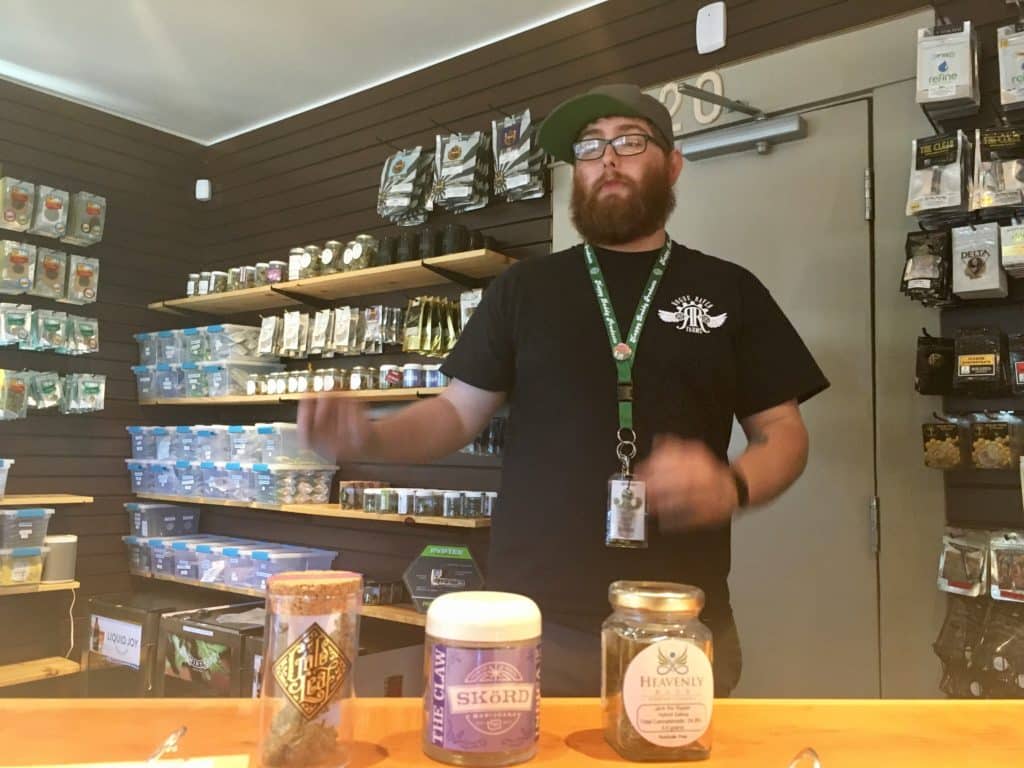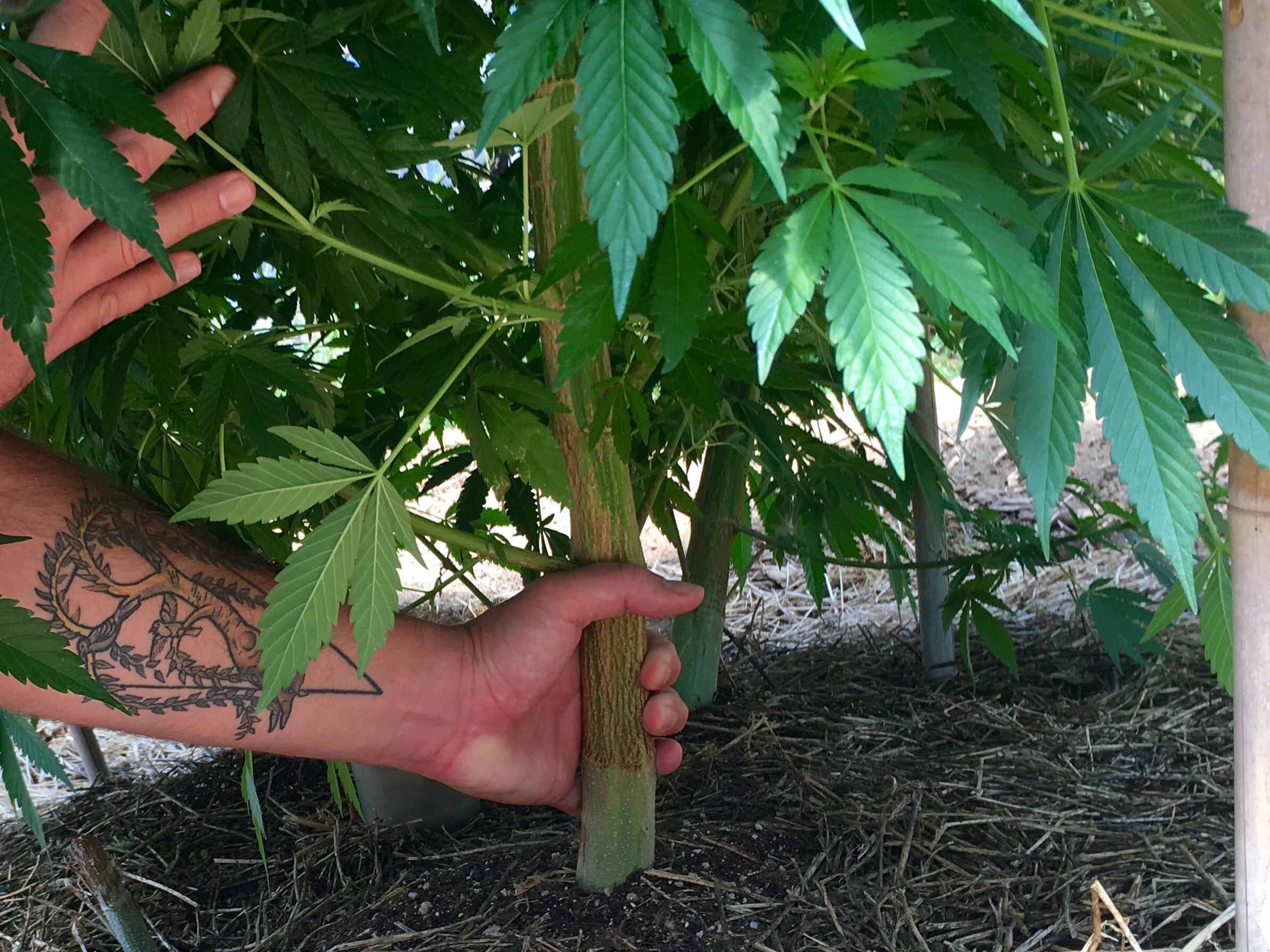
New to buying legal weed? Let us guide you.
Considering cannabis prohibition is just now slowly fading away, frequenting a dispensary is a unique and remarkable experience. It’s pretty amazing to browse among varied display cases filled with generous selections of cannabis flower, topicals, concentrates and edibles to purchase. Welcome to the wonderful world of legal cannabis. The following tips will help you make the most of your dispensary visit.
Plan Ahead
Some dispensaries focus on flower. Other shops spend more energy curating concentrates or edibles. Each one is unique. Unless you want to spend the day bouncing from one place to the next (which you could most certainly do), it’s best to call ahead and ask questions: What’s in stock? Is there a wait? How much am I allowed to purchase during my visit? Also, sites like Yelp, Merry Jane, Leafly and Weedmaps are great resources. They list dispensaries nearby, hours of operation, menu items and customer reviews.
Don’t Assume the Product is the Same at Each Dispensary
Cannabis is a dynamic plant. Every harvest is different depending on growing conditions such as techniques used, the environment or soil it was grown in, and the weather of the region. Rather than simply focusing on the strain name, also look at the grower, harvest date, terpene profile, and cannabinoid ratios. It’s all of these variables working together in conjunction with your own physiology that determine cannabis’ effect. Ask your budtender for recommendations based on these factors and your desired results.
Ask “How Was it Grown?”

There’s a common misconception that outdoor is inferior to indoor-grown cannabis. Yet, for some, there’s little substitute for cannabis cultivated in nature, underneath the powerful rays of the sun and the glow of the moon, surrounded by various forms of plant life, insects, worms and birds. This is still a rare practice as many municipalities require growing operations to be out of sight from the public. Cannabis requires a lot of light, so it’s also advantageous in some climate regions to use man-made techniques to reproduce environment and skirt the seasons in order to yield more crops per year. Because of this, just like common fruit and vegetable farming, cannabis is grown a variety of ways. From greenhouses to warehouses, artificial lighting to sun-grown, varying methods yield differing calibers of cannabis. Some growers use synthetic fertilizers and chemical pesticides while others use nothing but nature. While most legal states have pesticide-use limits in place, both the standards and enforcement vary from state to state. Since Organic Certification is a product of the U.S. federal government, it isn’t available to any cannabis producers under the law. Even if you see it advertised, true organic certification doesn’t actually exist in the industry, yet. Instead, look for grassroots certifications like Clean Green and Patient Focused, these are meant to assist farmers in using sustainable, biodynamic and overall, “organic-style” processes. Knowledgeable budtenders will be able to tell you how each product was grown and produced.
Don’t Touch the Flower
Once the budtender pops the lid off a delicious batch of cannabis, the temptation to grab a bud may be strong. Resist the urge. Instead, use your eyes to examine the offering before you. If you’d like to take a closer look, ask for assistance. Most dispensaries are equipped with magnifying glasses and tongs so you can examine the flower without placing your hands on it. Remember, this is people’s medicine and should be kept contaminate-free. Not to mention, you’ll want to take great care when handling cannabis or you’ll knock the glittery, tasty and potent trichomes off, diminishing both its efficacy and all the hard work of the harvester.
Examine the Smell
It’s ok to take a very large whiff of a sample. Just don’t pick it up or put it in your nose. Cannabis should smell potent from, at least, a few inches away without having to break a bud open. If you’re having difficulty detecting it’s odor, it’s most likely getting stale. Your budtender should be able to guide you toward the various odors of the strain. The essential oils that produce them are largely responsible for its effects. Like aromatherapy oils, the essential oils or “terpenes” in cannabis produce unique effects. When vaporized or smoked, orange and lemony citrus smells can contribute to relaxation and focus, while sweet lavender and peppery smells can contribute to sedation. Strong pine and eucalyptus smells can induce energy and help you breath more deeply. Of all the plants in the kingdom, cannabis has the unique ability to express huge amounts of varying terpenes. This is largely why we’re able to use cannabis for such a wide range of effects. Avoid musty or moldy smelling batches, and nugs that smells like dirt. Cannabis that smells like freshly cut grass may look interesting but is indicative of an overabundance of chlorophyll from improper curing and makes for a harsh smoke. Smells like funk, skunk and fuel are often praiseworthy and desirable.
Study How it Looks
Cannabis should look fresh. The colors should be vibrant; green, orange, pink, red, purple, blue, and black are all totally acceptable and often highly desired, but the buds should be void of brown and burnt yellow spots caused by chemicals and overexposure to light. Every grower has their preference for how they trim away cannabis leaves from the bud of the plant. Trim greatly affects cannabis’ appearance, and oftentimes its price. Rounded nugs that look uniformly like tiny Christmas trees can be an indication of automated machine trimming, used in large-scale cannabis harvests. Hand-trimmed cannabis typically has well defined pistils, also known as hairs, extending outward, and an abundance of glistening, frosty trichomes. Neither should contain seeds or stems. Their presence typically means the harvest was rushed to market. Smoking stems and seeds isn’t very tasty and you’ll want to avoid combusting them completely. If you see mold or insects, choose something else.
Make Your Selection
As you narrow down your top picks, consider mixing it up. Many dispensaries allow you to purchase grams, even half-grams. This enables you to try a number of different strains from a number of different producers. It can be fun to experiment with them and find your favorites. Some dispensaries even offer prepackaged tasting flights. Many of them also sell specialized journals for keeping track of the various nuance of your favorites so you know for next time.
Don’t Smoke Right Outside the Dispensary
Dispensaries are not places to consume, yet. It’s possible that one day we’ll see legal cannabis smoking lounges and cafes, but as it stands now, none exist. Most cities have some form of clean air ordinance which keeps people from smoking indoors, including vaping. Cannabis dispensaries, especially, are under scrutiny and must obey state and local laws. This usually means no consumption on the premises, including the sidewalk and parking lots. Doing so may earn you a ticket as well as one for the dispensary. It’s best to consume where you absolutely know it’s allowed.
Store Your Buds Properly
Once you’ve completed your dispensary visits, you’ll probably have at least a few grams to keep at home. Store your bud in airtight containers. Countless hours of work went into obtaining, planting, nurturing, harvesting, trimming and displaying your cannabis; it’s a good look to keep it pristine. Too much dry air will make your bud brittle and weaken the volatile terpenes responsible for making your cannabis smell and taste so great. Use a container with a kief-catcher to accumulate trichomes that shake off into dry-sift hash. Cannabis humidors with relative humidity control like the Cannador are great for budding connoisseurs.
- Blunted Objects Creates Bling for the High Minded and Stylish - September 3, 2017
- Valentine’s Day Gift Guide for the Cannabis Enthusiast - February 9, 2017
- How to Get a Cannabis Job in Oregon - January 19, 2017
